The Roman army reborn
During the unseasonably hot English spring of 2011, Lindsay Powell visited the remodelled Roman Army Museum on Hadrian’s Wall.
For anyone interested in the Romans and their army in particular, a visit to Hadrian’s Wall is a pilgrimage. At Greenhead, near Walltown Crags, one of the highest standing sections of the Wall, is the Roman Army Museum. From the small car park, a signed path guides the visitor to a small stone-built farmhouse building. The museum stands next to the remains of the Roman fort of Carvoran or Magna. It has been severely robbed of its stone, leaving little trace save for ditches and banks. Farm animals safely graze where once Roman soldiers stood guard and baked their daily bread.
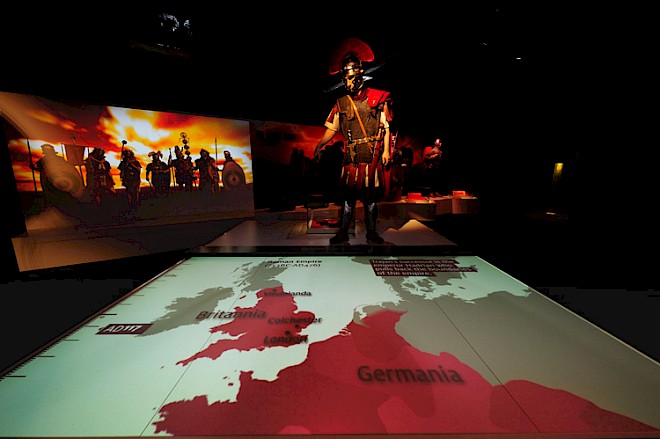
When I arrived just after midday on 19 April, I found the staff in relaxed mood. The team was basking in the glow of a visit by a VIP earlier in the day. The Duchess of Northumberland had officially opened the museum after a multi-million pound overhaul with money from the Heritage Lottery Fund of the UK’s National Lottery. The renowned Ermine Street Guard (ESG) had also turned out to provide the honour guard. Indeed, the society’s optio Martin White has become something of a poster boy for the museum, his distinctive crested and feathered helmet and handsome facial features gracing the promotional leaflet, and providing a ready-made icon for the Facebook and Twitter pages of The Vindolanda Trust which operates it.
The leaflet describes the museum as “bringing the past to life.” The museum is actually below the ground floor. Gallery 1 orients the visitor to the structure and organization of the Roman army. Life size mannequins are decked out as a mounted cavalryman with his shield slung over his back (complete with a cluster of enemy arrows sticking out of it), a centurion, a legionary (wearing breaches and socks) and an auxiliary soldier, all in authentic reconstruction armour and equipment. A large screen displays an animated presentation which explains the composition of the legion. At the feet of the centurion there is a map of the Roman Empire which expands and contracts as the imperial dominions were added. Along one side of the room a sunken space with benches provides seating in front of a tent inside of which a film plays of an actor in the role of a Roman officer at a campfire. I cannot relate back the content of the display as I was unable to get a seat the entire time of my visit, but those who could, looked totally absorbed by the video show.
Of the actual archaeological artifacts on display in the room, which include horse brasses, leather boots and belt buckles, undoubtedly the most remarkable is a find identified as the crest from a centurion’s helmet – the only one to have survived from Roman times. Chris Haines MBE, chair of the ESG, and the society’s centurion, had just an hour or so earlier been shown the item and confirmed that in his opinion, it was a crest. It is jet black in colour, made of local moss-hair and is carefully stitched or tied along the lower edge. Amazingly, it had been preserved in the anaerobic conditions of the ditch of the first timber fort at Vindolanda, dated to Julius Agricola’s time, c. AD 79-85.
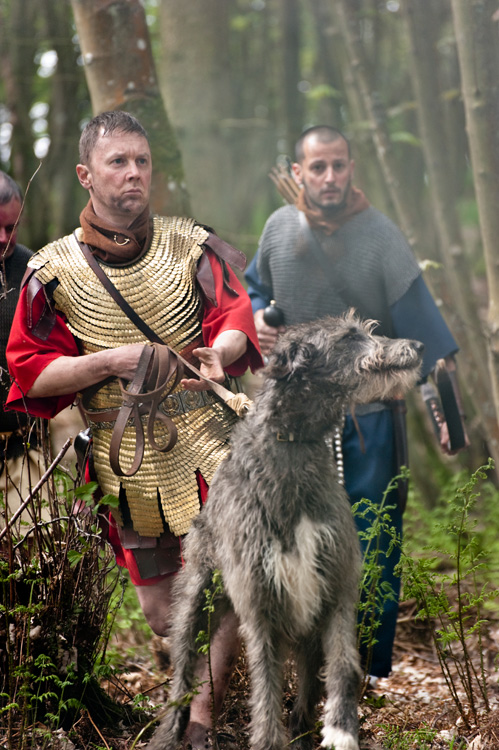
A sloping corridor takes the visitor down a gallery of first century personalities who figured in the conquest of Britannia. At the end is a theatre. The star attraction of the new museum is The Edge of Empire: The Eagle’s Eye film shot in 3D. Produced by local company Dene Films, the 20-minute film features members of the ESG. (Full disclosure: I am myself a veteran and still an associate member, but do not appear in the film). The documentary follows the life of a young auxiliary soldier during high points of his career at Vindolanda. The narration is read by Scottish-born actor Brian Cox. It is beautifully filmed and edited. (see the trailer here at http://www.youtube.com/watch?v=zTPUFsqlHcs). The views of the Wall shot from a helicopter look superb on the big screen, especially so when the actual footage is morphed with CGI material to create convincing impressions of how it looked soon after its building. The use of 3D, which requires glasses, is convincing. Employing the Guard ensures its overall authentic look – something the archaeologists of the Vindolanda Trust insisted on. The Edge of Empire sets the standard other directors of Roman period docudramas should aim to emulate. My complaint – and it is the only one – is that, at 20-minutes, it is too short. I wanted more…
Readers will be disappointed to learn that the movie is not available on DVD, nor are there any plans to offer it for sale. The Trust believes people will travel to the museum specifically to see the film. I think the view is shortsighted: case in point, IMAX sells high definition DVDs of many of its films, making the content available to enthusiasts who live far away from an IMAX theatre, who would otherwise never be able to benefit from viewing it. Selling a DVD beyond the confines of the museum would spread the name of the Trust far and wide and raise much needed revenue. Visitors to the museum would still have the edge over the home viewer as they would see the film in full 3D. Many visitors would buy a copy as a souvenir and share it with friends and family. I hope the Trust reviews its position and takes the broader view.
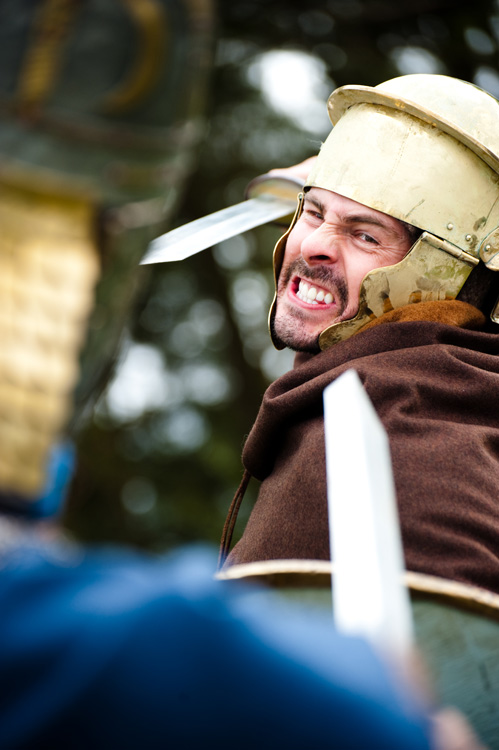
Leaving the theatre the visitor passes a large mural in the style of a scene from Trajan’s Column into Gallery 2 which tells the story of Hadrian, including a monologue purporting to be the emperor’s own reflection of his life. In fact, it was written by Robin Birley, the distinguished archaeologist of Vindolanda, who wrote a well-received biography of the emperor. In the adjoining room, the weapons of the Roman soldier are explained through reconstructions of period kit. The highlight of this room is a mechanical apparatus that simulates the force required to draw a Roman composite bow. With some effort, I managed to pull back the string far enough to reach a target 300 metres away! The actual skull of a Roman cow – pockmarked with small square holes – attests to its use as a target for pila or catapult bolts.

Life off duty is covered in the adjoining Gallery 3 with a display of tools, utensils and food available to soldiers on the Wall. There is a reconstruction of a two-wheeled cart, the type of vehicle the army used for transporting materiel. Meanwhile, a large screen plays a looping video, the audio of which I could not make out above the chatter of a coach load of loud French boys who had arrived earlier. A row of altars and associated items explain religious life. In the far corner by the exit are reconstructions of a Roman chariot and a native Iron Age British chariot, which seem oddly out of place.
I exchanged a few words with the Trust’s education officer. He was turned out in centurion’s kit, posing for photographs and fielding questions from eager members of the public. Like the other members of staff, he was pleased by the positive reception, though a little overwhelmed at the numbers of people gathered under the roof at that precise moment.

The overall look of the museum is clean, slick and very modern. The style is masculine and no-nonsense. The creative talent of the graphic artist is everywhere evident. Information panels consist of life-size photographs of re-enactors, while text in bold fonts is printed on blocks of primary colours. Wrapped around white-washed walls, the effect is like a series of large advertising posters in an Abercrombie & Fitch store. Visitors are encouraged to touch the items on display, and video panels present aspects of Roman army life in scripted monologues spoken by modern actors. Educational and informative it most definitely is – but only to a point. The general visitor will find the material very accessible and largely undemanding. The enthusiast of the Roman period – the student of history and the re-enactor – will leave feeling teased and a bit frustrated.
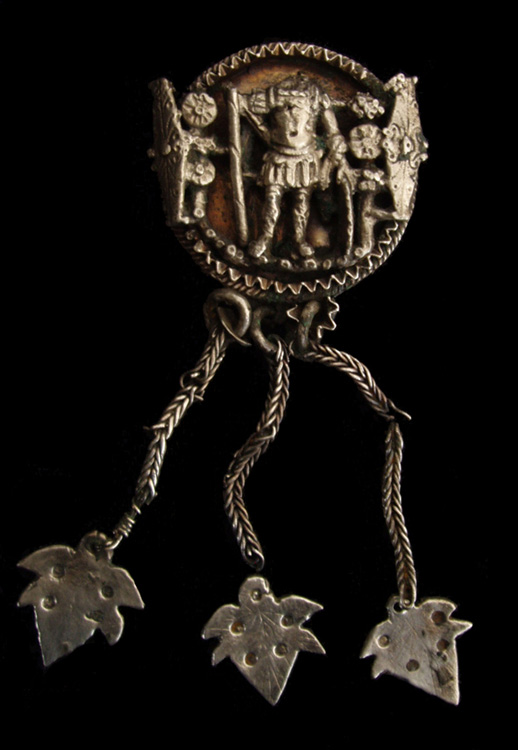
How to pitch a museum’s content is always a tricky decision. Today’s visitor has a short attention span, wants to interact with material and not feel he/she has to have a degree in classics to understand what is on display. It is history as ‘edutainment’. Yet, that compromise comes at a cost. By focusing only on the Roman army of the second century AD, the ongoing changes of the later periods in response to the Empire’s evolving military and political threats are ignored. Consideration of the multinational composition of the army garrisoning Hadrian’s Wall is also missing. In opting for reconstructions of arms and equipment and video footage of actors in period role, the designers of the museum have sacrificed a real opportunity here to display a wider variety of original material from the 250 years of the Wall’s history. They have eschewed the complexity of real life as lived for a simplified, arguably even a sanitized, view of a point in history. The designers could easily have made available searchable digitized content for visitors with different levels of knowledge about the subject. These could still be added as multimedia information kiosks located around the museum. With these additions, it will better live up to its big billing as a museum of the Roman Army.
There is a small coffee shop and a well-stocked souvenir-cum-bookstore with many attractive high quality gifts and several good books for sale, including reports of the latest excavations at Vindolanda not easily available elsewhere.
The Roman Army Museum is a class act. It is, without doubt, destined to become a major attraction for visitors to the Wall. The Trust relies exclusively on visitors and its Friends for funding. (Without hesitation, I signed up to be a Friend and I urge all visitors to do the same). With its high quality displays and 3D film, the museum should help to keep the funds flowing to support the vital work of The Vindolanda Trust in bringing new discoveries to light.
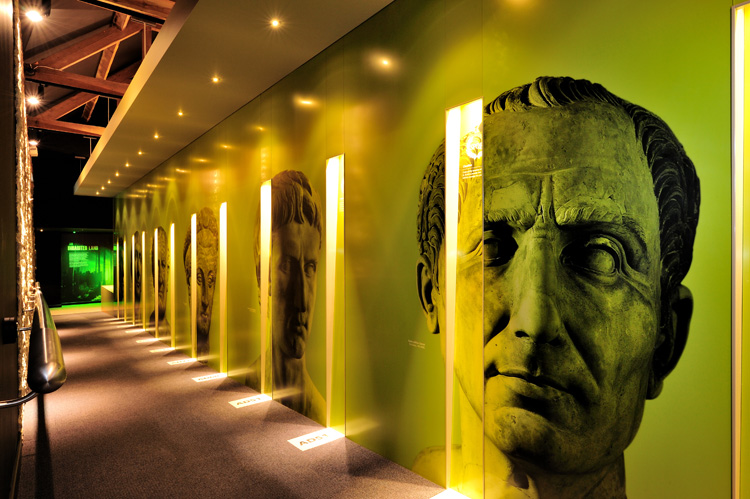
Entry to the museum costs £5 for adults, with discounts for families, children, students and seniors. A combination ticket affords access at a steep discount to the Roman Army Museum and the nearby Vindolanda site and its own newly renovated museum.
Lindsay Powell is a regular contributor to Ancient Warfare. He is the author of Eager for Glory: The Untold Story of Drusus the Elder, Conqueror of Germania (Pen and Sword Books) and is currently working on a biography of Germanicus Caesar.
Picture credits: the photos included in this blog post were made by Adam Stanford, taken from stills of Edge of Empire, or supplied by the Roman Army Museum.
